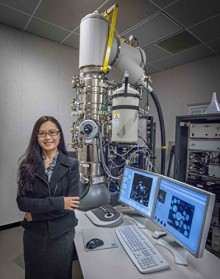DOE FUNDAMENTALS HANDBOOK MATERIAL SCIENCE: Metal Imperfections, Metal Defects, Properties of Metals, Thermal Stress, Thermal Shock, Brittle Fracture, Heat-Up, Cool-Down & Characteristics of Metals
by:
Jeffrey Jones (author)
U.S. DOE (author)
The Material Science Handbook was developed to assist nuclear facility operating contractors in providing operators, maintenance personnel, and the technical staff with the necessary fundamentals training to ensure a basic understanding of the structure and properties of metals. The handbook...
show more
The Material Science Handbook was developed to assist nuclear facility operating
contractors in providing operators, maintenance personnel, and the technical staff with the
necessary fundamentals training to ensure a basic understanding of the structure and properties
of metals. The handbook includes information on the structure and properties of metals, stress
mechanisms in metals, failure modes, and the characteristics of metals that are commonly used
in DOE nuclear facilities. This information will provide personnel with a foundation for
understanding the properties of facility materials and the way these properties can impose
limitations on the operation of equipment and systems.
The Department of Energy (DOE) Fundamentals Handbooks consist of ten academic
subjects, which include Mathematics; Classical Physics; Thermodynamics, Heat Transfer, and
Fluid Flow; Instrumentation and Control; Electrical Science; Material Science; Mechanical
Science; Chemistry; Engineering Symbology, Prints, and Drawings; and Nuclear Physics and
Reactor Theory. The handbooks are provided as an aid to DOE nuclear facility contractors.
These handbooks were first published as Reactor Operator Fundamentals Manuals in 1985
for use by DOE category A reactors. The subject areas, subject matter content, and level of
detail of the Reactor Operator Fundamentals Manuals were determined from several sources.
DOE Category A reactor training managers determined which materials should be included, and
served as a primary reference in the initial development phase. Training guidelines from the
commercial nuclear power industry, results of job and task analyses, and independent input from
contractors and operations-oriented personnel were all considered and included to some degree
in developing the text material and learning objectives.
The DOE Fundamentals Handbooks represent the needs of various DOE nuclear facilities'
fundamental training requirements. To increase their applicability to nonreactor nuclear facilities,
the Reactor Operator Fundamentals Manual learning objectives were distributed to the Nuclear
Facility Training Coordination Program Steering Committee for review and comment. To update
their reactor-specific content, DOE Category A reactor training managers also reviewed and
commented on the content. On the basis of feedback from these sources, information that applied
to two or more DOE nuclear facilities was considered generic and was included. The final draft
of each of the handbooks was then reviewed by these two groups. This approach has resulted
in revised modular handbooks that contain sufficient detail such that each facility may adjust the
content to fit their specific needs.
Each handbook contains an abstract, a foreword, an overview, learning objectives, and text
material, and is divided into modules so that content and order may be modified by individual
DOE contractors to suit their specific training needs. Each handbook is supported by a separate
examination bank with an answer key.
show less
Format: Kindle Edition
ASIN: B00UZQER80
Publish date: 2015-03-19
Publisher: U.S. Department of Energy
Edition language: English

